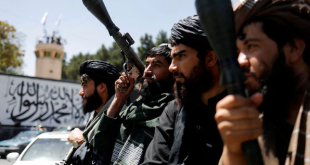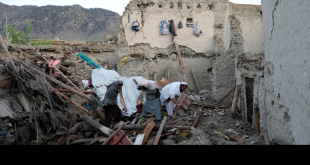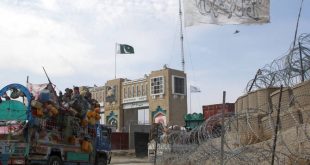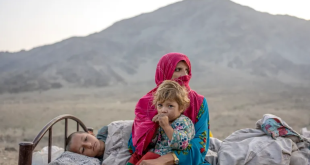AT-KABUL: The UN Assistance Mission in Afghanistan (UNAMA) is deeply concerned by the continued increase in conflict-related child deaths in 2017 and urges parties to the conflict to take immediate measures to reduce harm.
“I was appalled to hear that an unexploded mortar round killed five boys from the same family yesterday. The children were playing outside their home and found the mortar round, likely fired during fighting earlier in the day,” said Tadamichi Yamamoto, the Secretary-General’s Special Representative for Afghanistan in a media statement.
“A family destroyed in seconds – this horror is just one of too many incidents documented at the onset of this fighting season.”
The explosion took place in Mehterlam city, Laghman province. The first four months of 2017 witnessed the highest recorded number of child civilian casualties resulting from conflict-related incidents in Afghanistan, including the highest number of children killed, for the same comparable period since the Mission began documenting cases. Between 1 January and 30 April 2017, UNAMA preliminarily recorded 987 child casualties (283 deaths and 704 injured), a 21 per cent increase in child deaths compared to the same period in 2016. During 2017, child deaths have risen largely as a result of the persistent use of indirect and/or explosive weapons in civilian-populated areas and due to the use of illegal and indiscriminate improvised explosive devices.
Ground fighting caused 118 child deaths between 1 January and 30 April, responsible for 42 per cent of the total. The death on Sunday of two girls and injury of seven other children, as well as two women, after a mortar round fired into a residential area impacted their home in Pashtun Kot district, Faryab province, illustrates the dangers to which many Afghan children are exposed. After ground fighting, explosive remnants of war killed most children, resulting in 50 child deaths.
In the period up to 30 April this year, aerial operations have been responsible for 44 child deaths and improvised explosive devices (IEDs) responsible for 38 child deaths. Pressure–plate improvised explosive devices, which are activated by victims and therefore pose great risk to civilian populations, caused 27 of the 38 child deaths from IEDs.
Many of the more than 700 children injured in conflict-related incidents have suffered life-changing injuries, including loss of limbs, as well as significant and lasting trauma such as witnessing the death of siblings, parents, destruction to their homes or displacement. UNAMA once again urges parties to the conflict to prioritise the protection of children as the 2017 fighting season continues by taking all necessary precautions to reduce harm to civilians during fighting, including refraining from the use of indirect and/or explosive weapons in civilian-populated areas, particularly where distinction between civilians and non-civilians cannot be ensured. UNAMA welcomes the commitment of the Government to formally ratify Protocol V to the 1980 Convention on Conventional Weapons.
The mission urges all parties to the conflict to commence marking, clearing, removing and destroying explosive remnants of war left behind from fighting in areas under their territorial control.
 Afghanistan Times
Afghanistan Times




